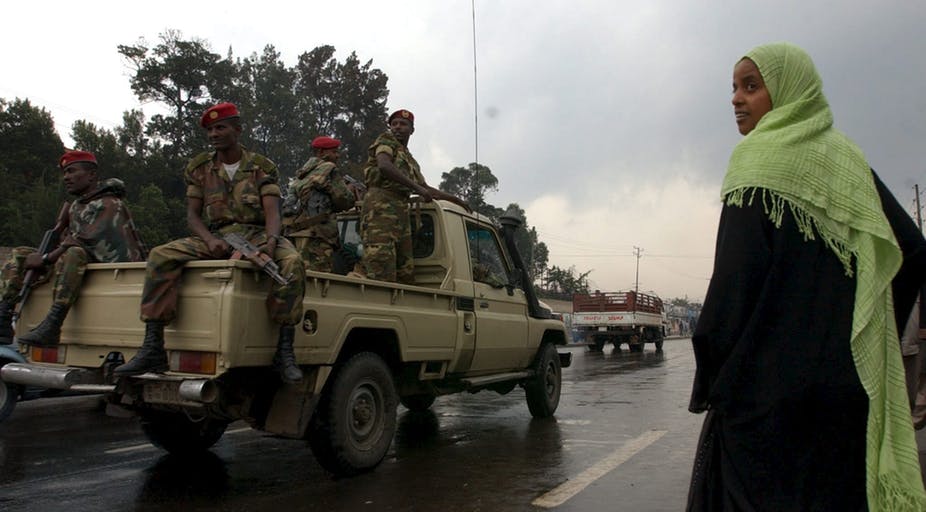 Author: Yohannes Gedamu (For The Conversation Africa)
Author: Yohannes Gedamu (For The Conversation Africa)
Ethiopia’s ethnic federal arrangement was designed to empower ethnic groups with the right to self administration rights. But it’s facing a major test. The current challenge comes from the Sidama ethnic group from a region commonly known the Southern Ethiopia Regional State.
Ethnic Sidamas have been granted self administrative rights by controlling political powers in the Sidama Zone administration. Zone administrations are the second tier of Ethiopia’s local government structure, just after regional states. But those pushing for statehood contend that the size of the Sidama population, which is about 4% of Ethiopia’s total population, should empower it to have its own regional state.
This demand is two decades old. It has gained new momentum over the past year following political changes that swept through the country and led to the rise of Abiy Ahmed as prime minister, a reformist who remains highly popular thanks to his pro-unity stance.
Ethnic federalism, as an institutional design, has its backers and its detractors. Those who defend the system argue that its failures are due to the fact that it hasn’t been implemented in the way in which it was designed. They contend that local governments are stripped of their constitutional powers, thanks to a dominant central government that interferes in regional affairs.
But those who oppose the system argue that it pits one group against the other. They point to the fact that Ethiopia has a very large number of internally displaced people due to numerous ethnic conflicts. Although its framers believed that the federal arrangement could promote unity in diversity, those who oppose it believe that internal displacements have occurred mainly because some groups want to homogenise the regions they administer. They also argue that the rise of ethno-nationalist movements are evidence that the federal arrangement is unravelling.
The Sidama demand for statehood presents one of the greatest challenges Ethiopia’s federal system has faced since its inception in 1995. It has already led to violence after the federal government announced it was delaying a referendum to settle the secession demand. But it poses a much bigger threat: if Abiy gives into the Sidama’s demands, he could signal the unravelling of Ethiopia’s federal system of government.
Here is why. Sidama’s secession from the Southern regional state would end the region’s status as a symbol of Ethiopian unity and would come at the most trying and divisive times in the country’s history. Such a decision will also pave the way for more Southern groups to push with similar quests for statehood.
The Sidama secession debacle is another example of the fact that a constitution that has prioritised the promotion of group rights over individual rights is under strain. In my view the solution remains that of political compromise followed by constitutional reform that guarantees all Ethiopian ethnic groups and citizens equal rights to live, work and prosper across the country.
Read more: Ethiopia: why the Sidama secession demand needs to be negotiated
Background
After the fall of the military regime in 1991, the provisional government charter created 14 regions that established Ethiopia’s new federal order. But a year later when the country’s new constitution was ratified, the governing Ethiopian People’s Revolutionary Democratic Front made some major changes. The biggest was that it consolidated five of the transitional era regions from the Southern part of the country into just one regional state. This was named Southern Nations Nationalities and Peoples Region, although commonly referred to as Southern Ethiopia regional state.
The effects of this decision continue to be felt. The one consequence was that it sowed the seeds of disaffection among the Sidama. Another is that the Sidama secession from the Southern region would massively affect the ruling party. This is because the Southern Ethiopia Peoples Democratic Movement is one of the four members that form part of the ruling Ethiopian People’s Revolutionary Democratic Front. Sidama’s secession would weaken the voting capacity of Southern Ethiopia Peoples Democratic Movement at the federal level. This could worsen if other groups in the south follow the Sidama example. This, in turn, would weaken the ruling democratic front.
This goes to explain Abiy’s responses. His administration seems to have controlled a situation that had the potential to trigger a nationwide disaster.
Abiy and the National Electoral Board of Ethiopia, which was mandated to organise and hold the referendum for Sidama’s statehood demand, tactfully delayed the decision. This appears to reinforce Abiy’s conviction that the country’s federal order and national unity need to be maintained, at least until the constitution is reformed.
Abiy’s actions are not without a recent precedent. A few months after he assumed office, the Somali region, which was led by Abdi Ile, with the help of his trusted Liyu (special in Amharic) Police, had attempted to force the regional parliament to discuss secession. Abiy ordered the Ethiopian army, then led by the late Chief of Staff General Seare Mekonnen to step in. The army foiled the regional President Abdi Mohammed Iley’s plans and subsequently put him in jail. Immediately, a new Somali regional administration was established with Mustafe Oumer, a popular former Somali activist at its helm. Since then, the Somali region has been relatively stable.
The fact that the situation seems calmer does not mean the political tension is over. Such political challenges indicate that Ethiopia’s federal arrangement remains extremely vulnerable.
There’s still a great deal of work to be done. Abiy’s government must make sure some of the most serious issues of disagreement are sorted once and for all. And the issue of constitutional reform needs to be addressed. The only outcome that will ensure Ethiopia steers away from imploding is if self administration rights – whether in the form of statehood demands or merger with other regions – are respected. But with the country’s constitution as a guideline.


